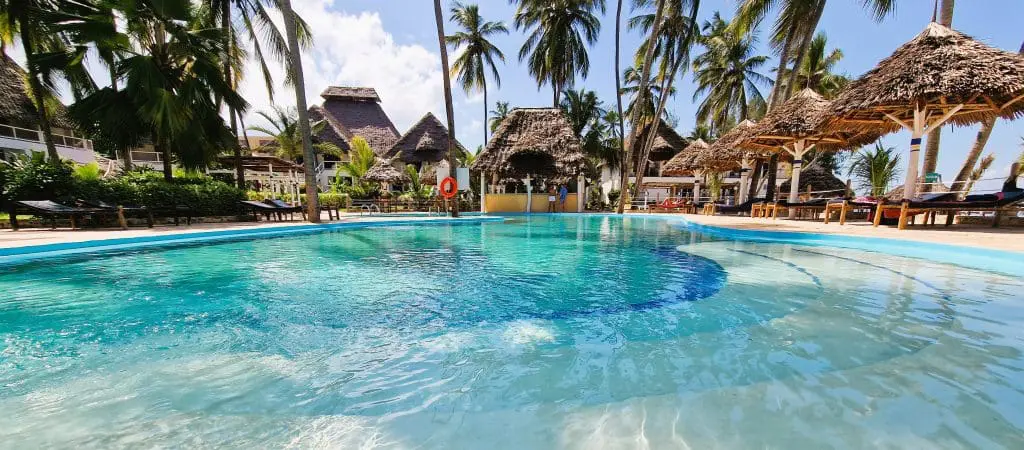
Welcome to
Tarangire National Park
It is the vast number of baobabs that first capture the eye as you enter Tarangire National Park. The gently rolling countryside is dotted with these majestic trees, which seem to dwarf the animals that feed beneath them.
Location
Tarangire National Park is located 120 km from Arusha and shares a border to the northeast with the Tarangire Wildlife Conservation Area, an area set apart by the government that serves as grazing land for local communities.
Situated slightly off the well-traveled northern Tanzania Safari Circuit, Tarangire National Park is nestled between the grasslands of the Masai Steppe and the lakes of the Great Rift Valley. The northern section of the park features the permanent Tarangire River, often referred to as the park’s lifeline. During the dry season, when the surrounding areas are parched, the river supports the region’s wildlife as it flows northward, eventually emptying into Lake Burungi at the park’s northwestern boundary. In the south, vast swamps transform into lush green plains during the dry season, showcasing the park’s ecological diversity.
Geography
Tarangire National Park receives its name from the Tarangire River, which flows through the area. The park is known for its dense vegetation, including acacia and mixed woodlands. However, around the river, the landscape is dominated by towering baobab trees.
The Tarangire River is the park’s lifeblood, providing water for the animals that live there. The Serengeti migration of wildebeest and zebras also passes through Tarangire during the dry season.
The park’s landscape is diverse, encompassing grasslands, striking granite rock formations, the lush river valley along the Tarangire River, expansive swamps, and woodlands made up of Acacia and Combretum.
Climate
The weather in Tarangire National Park is generally temperate and pleasant. The wet season presents two rainy periods: the short rains (from November to December) and the long rains (from March to May). Rainfall typically decreases around January and February, lasting for about a month. This period is featured by showers that usually occur in the afternoon and seldom throughout the day. While it rarely gets excessively hot, the mornings and evenings can be quite chilly, so warm clothing is recommended for early game drives.
Animal Migration
Every year, from June to November, Tarangire National Park hosts a significant wildlife migration from the Maasai Steppe, though not as dramatic as the Serengeti‘s famous wildebeest migration. During the dry season, when much of the surrounding area is arid, the Tarangire River becomes the only source of water, drawing large numbers of animals to its banks. As a result, during this time, Tarangire hosts the largest concentration of animals in northern Tanzania, making it a unique attraction. Wildebeests, elephants, gazelles, zebras, hartebeests, buffaloes, and various predators pursuing preys, like lions, converge on the river to drink and graze.
From November to May, when the rains come, zebras and large herds of wildebeest’s head northwest towards the Rift Valley floor, spreading across the open expanses of the Maasai Steppe and reaching as far as Lake Manyara. While the Serengeti’s migration often takes the spotlight, the annual migration in Tarangire remains a fascinating and lesser-known event for many visitors.
Wildlife
June to October is the best time to see a large number of wildebeest, elephants, zebras, and hartebeest, due to their migratory nature. Other animals such as giraffes, impalas, elands, lesser kudus, waterbucks, gazelles and sometimes rhinos or leopards can be seen throughout the year. Tarangire Safari Park is also a paradise for many bird lovers and famous for migrant birds. There have been identified more than 500 species, among them, eagles, parrots, pigeons, bustards, starlings or vultures.
Highlights and FAQ

Tarangire -> Arusha city: ~2h drive
Tarangire -> Lake Manyara: ~1h drive
Tarangire -> Ngorongoro: ~2h drive
Tarangire -> Serengeti: ~5h drive
Area: 2.850 km²
Travel: 120 km from Arusha
Established: 1970
Visitors: 162.000 / year
Official Homepage
- Elephants
- Giraffes
- Zebras
- Buffaloes
- Wildebeest
- Ostriches
- Leopards
- Lions
- Cheetahs
- Birds
- Snakes
- Monkeys
- Visit of a Maasai Boma
- Night game drive
- Walking Safari
- Air balloon Safari
- Mountain bike tour












